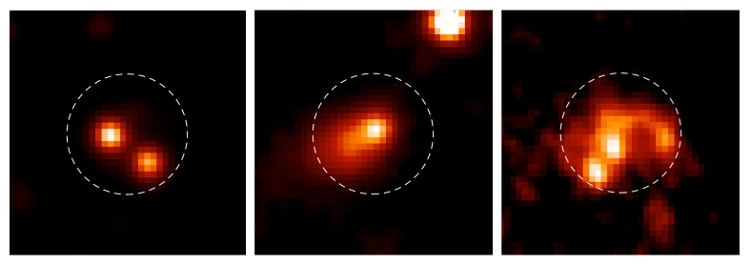| EPoS Contribution |
|
Towards a hierarchical multi-wavelength catalog of Galactic young stellar objects
Esteban Morales MPIA, Heidelberg, DE | |
| Currently, most multi-wavelength Young Stellar Object (YSO) catalogs use simple "nearest source" matching to associate sources across multi-wavelength surveys. However, given the differences in resolution between surveys at different wavelengths (up to factor of ~100 in some cases, e.g., between the ground-based near-infrared observations and the longest Herschel wavelengths), the high-resolution information is missed when using this approach. We are developing a formalism to represent hierarchical catalogs that associate multiple sources from a higher-resolution survey with a lower resolution survey. As a first step, we are studying how YSOs seen as an individual sources in the Spitzer-GLIMPSE survey are sometimes split into multiple sources when seen in the near-infrared higher-resolution UKIDSS Galactic Plane Survey (GPS). To quantify this effect, we are performing PSF photometry on the UKIDSS GPS images at the positions of ~10000 sources from the GLIMPSE YSO catalog (the ones covered by UKIDSS GPS). In this contribution, I will present the first results and some preliminary statistics, including possible corrections on Galactic star formation rate estimates based on YSO counts. | |
 | |
| Caption: UKIDSS K-band images at the position of three GLIMPSE sources. The white circles show the approximate size of the GLIMPSE PSF. These examples illustrate that a fraction of the GLIMPSE sources do not match up cleanly to a single point source in UKIDSS, and highlight the value of using the higher-resolution near-infrared observations to better understand the properties of YSOs selected at mid-infrared wavelengths. | |
| Collaborators: T. Robitaille, MPIA, Germany |
Suggested Session:
Massive Star Formation and Feedback |

